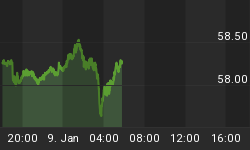
Two Bloomberg correspondents reported on August 8 that the US Government's unfunded liabilities rose by $11 trillion last year, "ten times larger than the official deficit", and are now at an estimated $222 trillion. The authors base their estimates on figures supplied by the Congressional Budget Office. This makes talk about the "fiscal cliff", as the Bush tax cuts come to an end, a secondary issue. Meanwhile in Germany the Constitutional Court will be told on 12 September that the bailout costs faced by Germany are €2 trillion with a further €1.7 trillion in the pipeline, compared with only €170 billion a year ago.
In contrast with these accelerating deficits, the gold price has fallen from over $1,900 to recent lows under $1,600. Admittedly this move has been accompanied by growing apathy in the market, matched perhaps by complacency in bond markets over the state of the government finances quoted above. Furthermore similar budgetary problems, particularly those welfare-related, afflict all advanced economies. And these liabilities are not just rising; they are accelerating and are unlikely to remain hidden for much longer.
While the general public is aware that the eurozone, for example, has difficulties and that world economic conditions are far from blissful, it is unaware of the enormous scale of the global sovereign debt crisis. Even economists who should know better ignore it; however, they are gradually beginning to realise, contrary to what their text-books tell them, that stuffing new money into an economy is not leading to recovery and underwriting future tax revenues. This being the case, unfunded liabilities will emerge at the same time tax revenues diminish.
Waking up to this reality will create its own financial shock, made worse perhaps because it has been the intention of governments to hide the truth. They have pursued this deception with zero interest rates, which have artificially cut the cost of government borrowing and kept stock markets from falling. At the same time they have fostered the myth that government spending can make a positive difference to the economic outcome. Contrast this with Spain and Italy, who are unable to conceal their financial difficulties any longer. Their problems are a foretaste for what the rest of us will eventually face.
Do recent stirrings in precious metal prices indicate an end to this complacency, or is it just a speculative bounce? Time will tell, but given the rapid deterioration of government finances, gold and silver have been left a long way behind. But summer's lease hath all too short a date. In the next few months we will think less about outdoor activities and more about what's ahead of us. Some of our future pre-occupations are easy to anticipate, such as the growing risk of the eurozone disintegrating. Others are less visible, but could this winter see us waking up to the consequences of governments' off-balance sheet liabilities turning into actual deficits?
If this is the case gold and silver - having dallied for a year - have a lot of catching up to do, and the recent rise should be the start of a major move upwards.
















